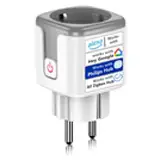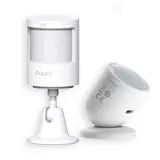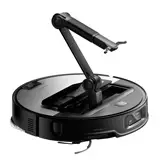We use information collected through cookies and similar technologies to improve your experience on our site, analyze how you use it and for marketing purposes.
Your privacy settings
We and our partners use information collected through cookies and similar technologies to improve your experience on our site, analyze how you use it and for marketing purposes. Because we respect your right to privacy, you can choose not to allow some types of cookies. However, blocking some types of cookies may impact your experience of the site and the services we are able to offer. In some cases, data obtained from cookies is shared with third parties for analytics or marketing reasons. You can exercise your right to opt-out of that sharing at any time by disabling cookies.
Manage Consent Preferences
Necessary
Always ON
These cookies and scripts are necessary for the website to function and cannot be switched off. They are usually only set in response to actions made by you which amount to a request for services, such as setting your privacy preferences, logging in or filling in forms. You can set your browser to block oralert you about these cookies, but some parts of the site will not then work. These cookies do not store any personally identifiable information.
Analytics
These cookies and scripts allow us to count visits and traffic sources, so we can measure and improve the performance of our site. They help us know which pages are the most and least popular and see how visitors move around the site. All information these cookies collect is aggregated and therefore anonymous. If you do not allow these cookies and scripts, we will not know when you have visited our site.
Embedded Videos
These cookies and scripts may be set through our site by external video hosting services likeYouTube or Vimeo. They may be used to deliver video content on our website. It's possible for the video provider to build a profile of your interests and show you relevant adverts on this or other websites. They do not directly store personal information, but are based on uniquely identifying your browser and internet device. If you do not allow these cookies or scripts it is possible that embedded video will not function as expected.
Google Fonts
Google Fonts is a font embedding service library. Google Fonts are stored on Google's CDN. The Google Fonts API is designed to limit the collection, storage, and use of end-user data to only what is needed to serve fonts efficiently. Use of Google Fonts API is unauthenticated. No cookies are sent by website visitors to the Google Fonts API. Requests to the Google Fonts API are made to resource-specific domains, such as fonts.googleapis.com or fonts.gstatic.com. This means your font requests are separate from and don't contain any credentials you send to google.com while using other Google services that are authenticated, such as Gmail.
Marketing
These cookies and scripts may be set through our site by our advertising partners. They may be used by those companies to build a profile of your interests and show you relevant adverts on other sites. They do not store directly personal information, but are based on uniquely identifying your browser and internet device. If you do not allow these cookies and scripts, you will experience less targeted advertising.






How do automation systems work without internet?
Imagine a world where your lights turn on at dusk, your irrigation system activates at the precise time, and all this without needing the internet. Sounds like magic, right? Well, it's not. It's offline automation, a robust and reliable system that works independently of your network connection.
What is offline automation?
Offline automation, also called local or disconnected automation, refers to systems that operate without the need for a constant internet connection. These systems rely on devices and protocols that communicate directly with each other, within a local network or even without any network at all.
This means that, even if your internet fails, your automated systems will continue to function as scheduled. It's an excellent option for environments where connectivity is unstable, expensive, or simply unwanted.
Key components of an offline automation system
To understand how it works, it's crucial to know the essential elements:
How does offline automation work in practice?
The process is quite simple. A sensor detects a change, sends that information to the controller, and the controller activates the corresponding actuator. All this happens in a matter of milliseconds, without relying on the cloud or an internet connection.
Examples of offline automation
To illustrate further, let's look at some concrete examples:
Advantages of offline automation
Choosing automation without internet offers a series of significant benefits:
Disadvantages of local automation
Like everything, offline automation also has some limitations:
Communication Protocols for Offline Systems
The choice of communication protocol is fundamental to the proper functioning of your automation system. These are some of the most popular:
Considerations when choosing an offline automation system
Before investing in an offline automation system, it's important to consider some key factors:
Setting up your local automation system: A step-by-step guide
While the setup may vary depending on the system, these are the general steps:
Tips for Successful Offline Automation
To get the most out of your system, follow these tips:
Comparative table of communication protocols
Offline Automation System Security
Although offline automation is inherently more secure than cloud-based systems, it's important to take steps to protect your system:
Offline Automation: Beyond the Home
While home automation is a common use, offline automation applications go much further:
The future of offline automation
As concerns about privacy and security grow, and the need for reliable systems in low-connectivity environments becomes more apparent, offline automation is gaining popularity. In the future, we expect to see even more sophisticated and user-friendly systems, with greater integration of artificial intelligence and machine learning.
Furthermore, combining local automation with secure remote access, using VPNs or other technologies, will allow you to enjoy the best of both worlds: the privacy and security of an offline system, with the convenience of remote control.
Conclusion
Offline automation is a powerful and reliable alternative to cloud-based systems. It offers greater privacy, security, and reliability, making it an excellent choice for those who value control over their data and the continuity of their automated systems. Are you ready to take control of your environment and automate your life without relying on the internet? Explore the possibilities and discover how offline automation can improve your life!
Share this article with your friends and family so they can also learn about the advantages of offline automation! Comment below if you have any questions or experiences you'd like to share!
Related Posts
Hubs vs. standalone devices: which is the better choice?
Are you at the crossroads of home automation or smart device management? You've probably asked yourself: is a centralized hub better or a collection of devices running on their own? The answer is not as simple as "yes" or "no." It depends on your needs, your budget and your ...
"Is it possible to control a smart home from a car using CarPlay or Android Auto?"
Imagine this: you get home after a long day at work. Before you even park your car, you open the garage, turn on the living room lights and set the heating to a comfortable temperature. Sounds futuristic, right? But did you know that this is possible, today, by controlling your smart home from your car with CarPlay ...
How to connect and sync devices from different brands
Have you ever been frustrated trying to get your Android smartwatch to work seamlessly with your iPad? Or maybe trying to send a file from your Samsung smartphone to your Apple laptop? Connecting devices from different brands can seem like a maze, but don't worry! This guide will show you how to do it simply and ...
Robot vacuums: How to choose the best model?
Tired of spending hours vacuuming your house? Imagine coming home after work and finding everything spotless, without lifting a finger! The solution exists and it's called a robot vacuum. These small appliances have revolutionized home cleaning, but with so many options on the market, choosing the best one can be overwhelming. Don't…